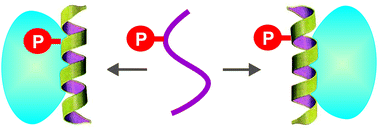The principle of conformational signaling
Abstract
Signal transduction is the primary process by which cells respond to changes in their physical and chemical environments. Cellular response is initiated through a signaling protein (a receptor), which interacts with the “signal”, most often a novel molecule outside or inside the cell. The mechanism of activation of the receptor is a conformational change and/or covalent modification, which then sets in motion a signaling pathway, i.e. a cascade of modification and binding events that relay and amplify the message to eventually alter the state of the cell. In reflection of this general perception, concepts such as the “second messenger” and the “phosphorylation cascade” dominate our views of signal transduction. The idea I advocate here is that the non-covalent change in protein conformation itself might serve as the initial or intermittent “signal” in the cascade, and it is often the primary event being recognized and interpreted by downstream receptor(s). This signaling principle is intertwined with many other cellular regulatory concepts, such as (pathway) allostery, conformational spread, induced folding/unfolding, conformational memory, the hierarchical assembly of complexes, and the action of regulatory chaperones and prions. By elaborating on many examples and also recent advances in experimental methodology, I show that conformational signaling, although thus far underappreciated, is a general and robust signaling principle that most of the time operates in close interplay with covalent signals in the cell.


 Please wait while we load your content...
Please wait while we load your content...